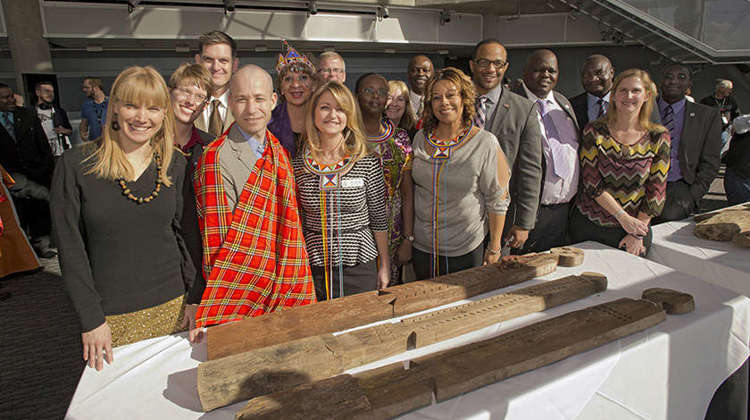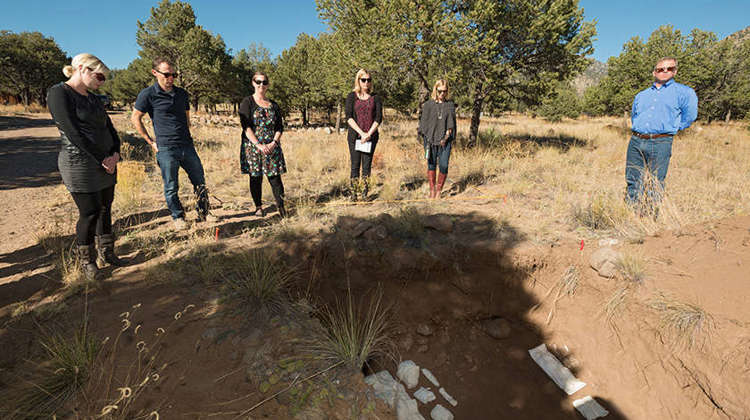The Denver Museum of Nature & Science is committed to the principles of respect, reciprocity, justice, and dialogue to address any and all claims for repatriation
On November 16, 1990, Congress passed the Native American Graves Protection and Repatriation Act, known as NAGPRA. This expansive law establishes a process—often called repatriation—for museums to return cultural items and human remains. At the Denver Museum of Nature & Science, NAGPRA has radically improved the Museum’s relationship with Native Americans. The Denver Museum of Nature & Science has returned numerous cultural items through NAGPRA as well as items to Canada and Kenya. The Museum has consulted on all known Native American human remains in its collections and only curates human remains for which informed consent has been given by the individual or her/his family, kin, or community.
From the first, the Museum’s approach to NAGPRA has been guided by its Ethics Policy Statement (board adopted in 2008; reaffirmed in 2017), which directs the Museum’s president, staff, and trustees to implement ethical practices. These include:
The Museum shall not knowingly and willfully accept or acquire any object that was illegally imported or illegally collected or that was received under circumstances that would encourage irresponsible damage, destruction, or illegal trade of biota; historic, cultural, and natural sites; or human burial places.
Decisions concerning human remains and sacred and funerary objects are treated with the respect and cultural sensitivity that emerges from the legal and governing practices of the culture of origin. The unique and special nature of human remains and funerary and sacred objects is recognized as the basis of all decisions concerning these collections.
Competing claims of ownership that may arise in connection with objects in the Museum’s custody shall be handled openly, seriously, responsively, and with respect for the dignity of all parties involved.
Additionally, the Museum’s approach to repatriation must be guided by its Manual of Collection Policies (board adopted in 2008; revised in 2022 and adopted in 2023). Read Section 8 of the Manual of Collection Policies for more information. These principles, practices, and ethical commitments should guide all procedures outlined here. This procedures document particularly reaffirms the Museum’s commitment to the principles of respect, reciprocity, justice, and dialogue to address any and all claims.

Vigango Repatriation
In 2008, we became aware that the DMNS had 30 wooden statues called vigango (singular: kigango) in its collection. Vigango are more than just grave markers in the Western sense. The Mijikenda believe vigango are living objects and the physical embodiment of a dead person’s soul. Like totem poles in the Northwest Coast of North America, once erected, vigango are to be left alone to decay through natural forces. Most assuredly, vigango are not works of art to be held by or displayed in museums.
NAGPRA does not apply to objects from Kenya because, among other things, the U.S. government has no jurisdiction over Kenyan property and people. The flip side is also true—the Kenyan government can’t simply pass a law declaring that foreign entities like U.S. museums have to repatriate vigango.
After a lot of work the vingango were successfully returned to Kenya in 2019. Later that year, Dr. Steve Nash and family journeyed to Kenya to see the vigango at the Fort Jesus Museum in Mombasa and visited Mijikenda villages from which the objects were taken.
The Mijikenda are working to develop a center in one of their sacred forests where the vigango from the Denver Museum of Nature & Science will be eventually placed and protected.

Crestone Reburial
On October 14, 2015, unidentified human remains from the Museum's collection were laid to rest at a non-denominational cemetery in Crestone, Colorado. A large number of people from Crestone, including the mayor, joined a sizable Museum delegation to pay their respects. We asked the assembled to recognize the sacrifice, honor, and dignity of the individuals whose remains we were burying. .
